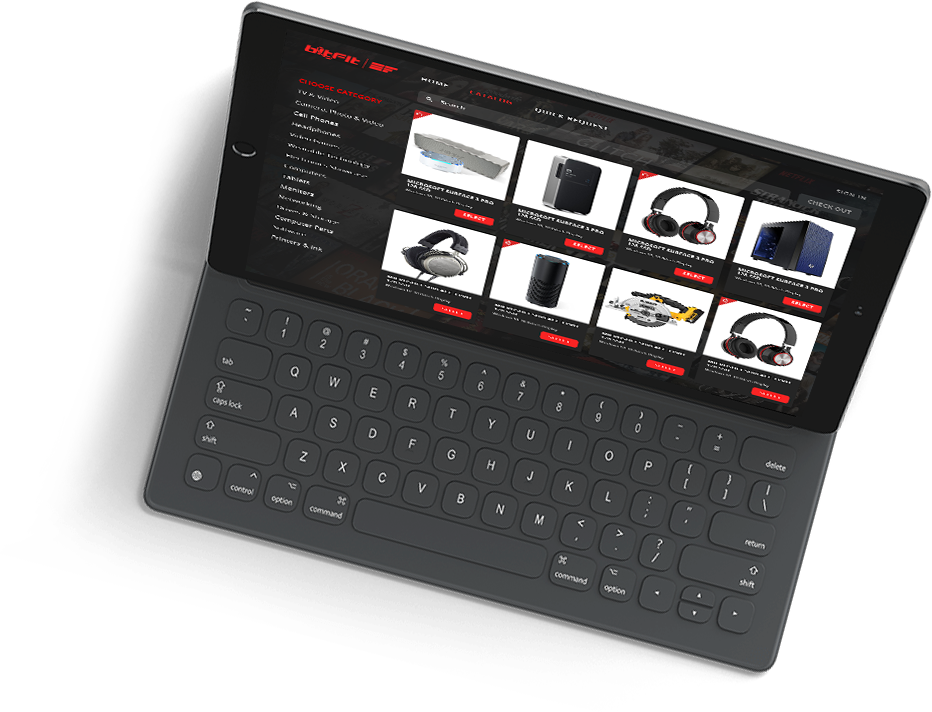
Tangible asset management is a critical function for businesses across various industries. Whether it’s the machinery that powers production lines, the vehicles that enable logistics, or the IT assets that power employees, managing these physical assets effectively is essential for maintaining operational efficiency, compliance, and financial stability. This comprehensive guide explores tangible asset management, including strategies, tools, best practices, and future trends, to help businesses optimize their asset management processes.
Definition of Tangible Assets
Tangible assets are physical items that hold value and are essential to a business’s operations. Unlike intangible assets, such as intellectual property or goodwill, tangible assets have a physical presence. Examples include machinery, buildings, vehicles, equipment, and IT assets. These assets are crucial as they contribute directly to the production of goods or the delivery of services, making them a significant part of a company’s total assets.
Importance of Tangible Asset Management
Effective tangible asset management ensures that these physical assets are acquired, deployed, maintained, and disposed of in a way that maximizes their value and minimizes risks. Poor asset management can lead to financial losses, operational inefficiencies, and compliance issues. Therefore, understanding how to manage tangible assets throughout their lifecycle is vital for sustaining a business’s competitive edge and ensuring long-term profitability.
Types of Tangible Assets
Fixed Assets
Fixed assets, also known as capital assets, are long-term physical items that a company uses in its operations to generate income. These include land, buildings, machinery, and equipment. Unlike current assets, fixed assets are not expected to be converted into cash within a year. They are subject to depreciation over time, which affects their book value and requires careful tracking and management to ensure they are utilized efficiently throughout their useful life.
Current Assets
Current tangible assets are those expected to be converted into cash or used up within a business cycle, usually one year. Examples include inventory, raw materials, and cash on hand. Managing current assets involves ensuring they are readily available for use without tying up too much capital, which can impact liquidity. Unlike fixed assets, current assets are not subject to depreciation but require effective inventory management and monitoring to prevent loss or obsolescence.
Specialized Tangible Assets
Certain industries, such as healthcare, construction, and manufacturing, require specialized tangible assets. These can include medical equipment, construction machinery, and specialized tools. Managing these assets often involves additional challenges like regulatory compliance, specialized maintenance, and higher acquisition costs. Effective management of specialized assets is critical to ensuring they remain operational and compliant with industry standards.
The Asset Management Lifecycle
Acquisition
The acquisition phase involves the procurement of tangible assets. Businesses must decide whether to purchase or lease assets, consider vendor selection, and perform cost-benefit analyses to ensure the investment aligns with their strategic goals. Key considerations include the total cost of ownership, potential tax benefits, and the asset’s expected useful life. Proper acquisition planning ensures that the business invests in assets that will provide the greatest return on investment (ROI).
Deployment
Once acquired, assets must be deployed effectively to ensure they contribute to operational efficiency. This phase involves planning the logistics of asset deployment, including transportation, installation, and integration into existing systems. Training employees on using the assets is also crucial to maximize productivity and minimize downtime. Deployment planning should also consider potential disruptions and include contingency plans to address unexpected challenges.
Maintenance
Maintenance is critical to tangible asset management, ensuring assets remain functional and productive throughout their lifecycle. Regular maintenance can prevent unexpected breakdowns, extend the useful life of assets, and improve safety. Businesses can adopt preventive maintenance strategies involving routine checks and servicing or predictive maintenance, which uses data and analytics to predict when maintenance is needed. Using the right tools and technologies to track maintenance schedules and performance metrics is essential for optimizing asset maintenance.
Depreciation and Valuation
Tangible assets depreciate over time due to wear and tear, technological obsolescence, and other factors. Understanding different depreciation methods, such as straight-line and reducing balance, is important for accurate financial reporting and tax compliance. Regular asset valuation helps businesses understand the current worth of their assets, which is essential for decision-making, insurance purposes, and financial planning. Depreciation and valuation should be reviewed periodically to reflect the true value of assets on the balance sheet.
Disposal
Eventually, tangible assets reach the end of their useful life and must be disposed of. Disposal can involve selling the asset, recycling it, or scrapping it altogether. The decision to dispose of an asset should consider its residual value, environmental impact, and potential recovery of costs. Sustainable disposal methods, such as recycling, are becoming increasingly important as businesses strive to reduce their environmental footprint. Proper disposal ensures that the business maximizes the return on investment and complies with environmental regulations.
Best Practices in Tangible Asset Management
Asset Tracking and Monitoring
Tracking and monitoring tangible assets are fundamental to effective asset management. Technologies such as Radio Frequency Identification (RFID), Global Positioning System (GPS), and asset tagging allow businesses to track their assets’ location, condition, and usage in real-time. Implementing a robust asset tracking system reduces the risk of asset loss, improves inventory management, and enhances operational efficiency by ensuring that assets are available when needed.
Compliance and Regulatory Requirements
Compliance with industry-specific regulations is critical in tangible asset management. Depending on the industry, there may be regulations regarding the maintenance, safety, and disposal of assets. For example, the healthcare industry requires strict compliance with regulations for medical equipment, while the manufacturing industry must adhere to safety standards for machinery. Failure to comply with these regulations can result in fines, legal liabilities, and reputational damage. Implementing a compliance management system helps ensure that all assets meet regulatory requirements.
Risk Management
Tangible assets are exposed to various risks, including theft, damage, and obsolescence. Effective risk management involves identifying these risks, assessing their potential impact, and implementing strategies to mitigate them. Insurance is a common risk management tool, providing financial protection against asset loss or damage. Regular audits and security measures can also help prevent theft and unauthorized use. Additionally, staying informed about technological advancements can help businesses plan for and manage the risk of asset obsolescence.
Data-Driven Decision Making
In the era of big data, businesses have access to vast information that can inform asset management decisions. Asset management software can collect and analyze data on asset performance, maintenance history, and utilization rates. By leveraging this data, businesses can make informed decisions about asset acquisition, maintenance schedules, and disposal strategies. The integration of Artificial Intelligence (AI) and Machine Learning (ML) in asset management systems allows for predictive analytics, enabling businesses to anticipate asset failures and optimize their asset management strategies.
Tools and Technologies in Tangible Asset Management
Asset Management Software
Asset management software is a vital tool for managing tangible assets throughout their lifecycle. Leading solutions such as bitFit offer features like asset tracking, maintenance management, and compliance monitoring. When selecting asset management software, businesses should consider factors such as ease of use, scalability, integration capabilities, and support for industry-specific needs. The right software solution can streamline asset management processes, reduce costs, and improve overall asset performance.
Internet of Things (IoT)
The Internet of Things (IoT) has revolutionized tangible asset management by enabling real-time tracking and monitoring of assets. IoT devices can collect data on asset condition, location, and usage, providing businesses with valuable insights into asset performance. For example, sensors attached to machinery can monitor temperature, vibration, and other parameters, alerting maintenance teams to potential issues before they lead to equipment failure. IoT-driven asset management improves operational efficiency, reduces downtime, and enhances decision-making by providing real-time data.
AI and Automation
Integrating Artificial Intelligence (AI) and automation into tangible asset management revolutionizes how businesses manage their physical assets. Advanced AI-driven asset management tools enable more proactive and precise asset management by offering predictive maintenance, automated data analysis, and intelligent reporting capabilities. These technologies enhance operational efficiency, reduce human error, and allow for more strategic decision-making.
bitFit AI stands out as a prime example of how AI can be applied to asset management. It offers several key features that significantly improve the management and control of tangible assets.
- On-Demand Training and Support: bitFit AI gives users instant access to guidance and support, answering queries about navigating the system and managing assets. This feature ensures employees can resolve issues promptly, minimizing disruptions and enhancing productivity. By delivering support exactly when needed, bitFit AI helps maintain smooth operations and maximizes the utility of the asset management system.
- Monitoring for Consistency: Another powerful capability of bitFit AI is its ability to monitor user activity within the asset management platform continuously. It detects inconsistencies, such as incorrect data entries or deviations from established procedures. When these discrepancies arise, bitFit AI immediately alerts users and offers corrective suggestions, ensuring asset management practices remain consistent with company standards and best practices.
- Personalized Training Recommendations: Based on its monitoring functions, bitFit AI can identify gaps in users’ knowledge or skill levels. It then provides tailored training recommendations to address these specific needs. This personalized approach ensures that employees receive the exact training they require to improve their proficiency, resulting in more accurate and consistent management of assets.
- Automated Reporting on Data Fixes: bitFit AI also plays a critical role in maintaining data accuracy by generating automated reports on detected inconsistencies and the corrective actions. These reports are invaluable for management, as they provide insights into common issues, track the effectiveness of training programs, and ensure that asset data remains reliable and up-to-date. This functionality streamlines data integrity efforts and supports continuous improvement within the organization.
Integrating AI and automation through tools like bitFit AI sets new tangible asset management standards. By leveraging these advanced technologies, businesses can enhance their asset management strategies and ensure greater consistency, efficiency, and accuracy across their operations.
Future Trends in Tangible Asset Management
Increasing Role of AI and Machine Learning
As AI and Machine Learning technologies evolve, their role in tangible asset management is expected to grow. Future trends include the development of more sophisticated predictive analytics tools that can anticipate asset failures with greater accuracy. Additionally, AI-driven decision-making will become more prevalent, allowing businesses to automate complex asset management tasks and optimize their operations.
Sustainable Asset Management
Sustainability is becoming an increasingly important consideration in tangible asset management. Businesses focus on reducing their environmental impact by adopting eco-friendly disposal methods and sourcing sustainable materials for their assets. The trend toward circular economy models, where assets are reused, refurbished, and recycled, is expected to gain momentum. Sustainable asset management practices contribute to environmental protection, enhance a company’s reputation, and lead to cost savings.
Integration with Enterprise Systems
The future of tangible asset management lies in its integration with broader enterprise systems such as Enterprise Resource Planning (ERP) and Customer Relationship Management (CRM) systems. By integrating asset management with these systems, businesses can achieve a unified approach to managing their operations, improve data accuracy, and enable better decision-making. The integration also facilitates seamless communication between departments, leading to more efficient and effective asset management.
Conclusion
Summary of Key Points
Tangible asset management is a critical aspect of business operations that involves the strategic acquisition, deployment, maintenance, and disposal of physical assets. By implementing best practices such as asset tracking, compliance management, and data-driven decision-making, businesses can optimize their asset management processes and improve their bottom line.
Final Thoughts
As technology advances, businesses must stay ahead by adopting innovative tools and strategies for tangible asset management. Whether leveraging AI and IoT for real-time monitoring or integrating asset management with enterprise systems, the future of tangible asset management promises to be both exciting and challenging. By investing in effective asset management practices today, businesses can ensure long-term success and sustainability.

